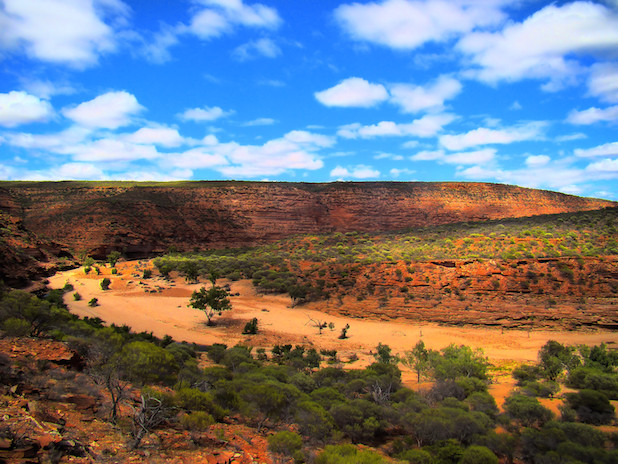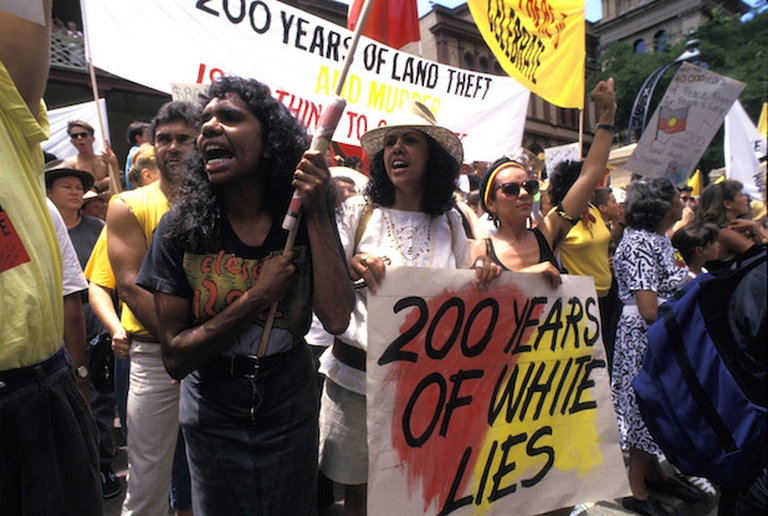
Renzo Piano’s archive in Genoa houses the great architect’s projects. It brings young people closer to creative work, which he equates to “looking into darkness without fear”.
A few days ago Antony Hegarty, the lead singer of the band Antony and the Johnsons, participated in the Dark Mofo Festival, a music festival taking place in Tasmania. She sang her hits on the Odeon theatre’s stage in Hobart for an hour without saying a word. But when she got back to the stage for an
A few days ago Antony Hegarty, the lead singer of the band Antony and the Johnsons, participated in the Dark Mofo Festival, a music festival taking place in Tasmania. She sang her hits on the Odeon theatre’s stage in Hobart for an hour without saying a word. But when she got back to the stage for an encore, she ad-libbed a fifteen minutes speech on the Martu population of the Parnngurr community in Western Australia Pilbara region.
Hegarty was invited by Lynette Wallworth, an Australian artist living in Sydney, on a ten-day trip in the Pilbara in 2013. Out of this – even artistic – encounter between the singer of British origins and the Aboriginal population, Lynette directed a video where these two cultures blend together.
With her speech, Hegarty drew attention to what is happening in Australia in these days: last April, the Australian federal government approved the construction of the world second largest uranium mine within the Karlamilyi National Park (part of the traditional lands of the Martu people). While some Martu supported the project, those of Parnngurr – eighty kilometres from where the mine will be built – strongly opposed to it.

The artist underlined how it is important to preserve aboriginal peoples. In particular, she condemned the “genocide” of indigenous peoples in Australia and the US:
There is this secret embedded genocide to white people’s presence in the Americas and in Australia (…) Australia’s Indigenous people are a “precious resource” (…) As far as I’m concerned those are the people we need to be asking, begging for education and advice from … people that have this reservoir of knowledge that we can barely comprehend (…)We desperately need their input.
During her stay in Australia, Antony Hegarty helped the Martu in different ways: she donated part of her Australian concert revenues to the aboriginal peoples’ anti-mine campaign and, a few days ago, she took part in a demonstration at the Museum of Contemporary Art in Sydney with nine old Martu people gathered in front of Kalyu, a work of art depicting local water courses that is emblematic of their community.
Many environmental groups, including the Australian Conservation Foundation and Friends of the Earth, support the Martu’s protests: the mine will be built on sacred lands and may be harmful to underground aquifers connected to surface hydraulic systems over the years.
Siamo anche su WhatsApp. Segui il canale ufficiale LifeGate per restare aggiornata, aggiornato sulle ultime notizie e sulle nostre attività.
![]()
Quest'opera è distribuita con Licenza Creative Commons Attribuzione - Non commerciale - Non opere derivate 4.0 Internazionale.
Renzo Piano’s archive in Genoa houses the great architect’s projects. It brings young people closer to creative work, which he equates to “looking into darkness without fear”.
The 50th anniversary of the Moon landing on 20 July has awakened the fantasy of many. Here’s the perfect playlist of musicians who have let themselves be inspired by the universe and its celestial bodies.
N’we Jinan is a Canadian record label that gives First Nations students their voice back by allowing them to create their own music in mobile recording studios.
The Australian songwriter, who became famous with Follow the Sun, is back with Walk Away, a new and powerful ode to freedom. He’s about to set off on a world tour. Our interview with Xavier Rudd.
Three teenagers from New Zealand sing in the Maori language about abuse at the hands of British colonisers. Thanks to their thrash metal music, young people are being attracted to native culture.
There’s no room for anger, resignation, or desire for revenge in this playlist. There’s just the moral obligation of retracing and telling the stories that can’t go lost and forgotten all over again. We do so through music.
Le canzoni più belle del 2017 secondo LifeGate Radio. Con questa playlist lanciamo la nostra collaborazione con Spotify Italia che vi farà ascoltare la musica migliore, selezionata.
An organisation that unites over 1,000 mainly Maya women in Guatemala has expressed alarm that indigenous handicrafts, textiles called “huipiles” in particular, are under threat because underpriced industrial fabrics appropriating indigenous patterns have flooded the Guatemalan market, depriving many native women of their main source of income. Read more: Down to Xjabelle, the fashion collection by a young designer with Down
Rwandan creatives share a common dream: they want to use their art to bring about positive change in society, as well as put their country on the map. They’re mostly young, ambitious, self-taught and have a strong desire and determination to challenge mentalities, move forward and grow. In her documentary RWANDArt: A new creative generation, which








